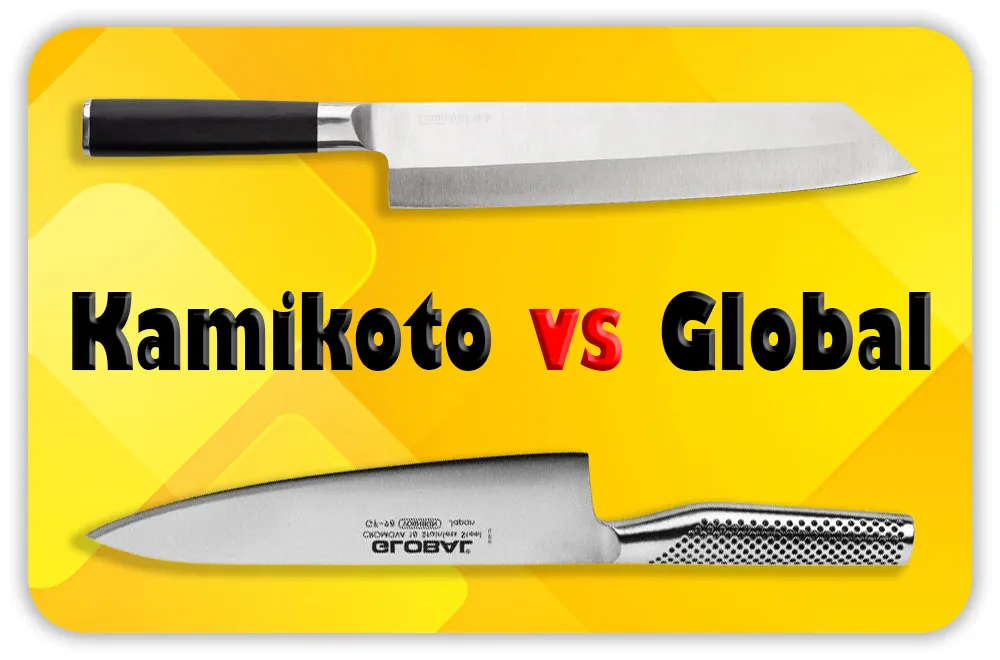Are Kamikoto knives good? If you’ve ever wondered, let me share my experience. Using Kamikoto knives feels like stepping into Japan’s rich tradition. They’re sharp, balanced, and stunning. Slicing veggies or carving meat becomes effortless. Let’s explore what makes Kamikoto special—and if they’re worth it.
Table of Contents
Tried and Tested: Are Kamikoto Knives Good?
Knives can make or break your cooking experience. After using Kamikoto knives, I believe they live up to the hype in many ways. Their mix of tradition and utility stands out. Let me share what I loved—and where they could be better.

Materials and Construction
A knife’s materials and build are key to its performance. Here’s what I’ve observed about Kamikoto’s quality.
Blade Material: Kamikoto knives use Honshu steel, known for being strong and rust-resistant. The sharp edge stays intact with frequent use, making cutting tasks smooth.
Blade Structure: Each blade is forged, giving it strength and balance. This design prevents flexing during tough jobs like cutting dense veggies.
Handle Material: The wooden handles are sleek and fit well in the hand. They provide a firm grip during long prep sessions and add a classic look.
Overall Build: The full-tang design offers durability and balance. These knives feel neither too heavy nor too light, which makes them easy to control.
Design
Great design adds to a knife’s appeal. Kamikoto’s design blends style and utility.
Blade Shape: The Nakiri knife’s flat blade is perfect for chopping vegetables, while the slicing knife glides through meats with ease.
Ergonomics: The handles feel natural, reducing strain during long use. These knives feel like an extension of my hand.
Aesthetics: The satin finish and wood handles give a refined, timeless look. They’re as stunning as they are practical.
Practical Features: Kamikoto includes thoughtful details, like a single bevel edge for precision. The wooden storage box keeps the knives safe and organized.
Performance
How a knife performs matters most. Kamikoto knives deliver in key areas.
Sharpness: These knives are razor-sharp from the start. They cut tomatoes and tough meats cleanly, with no tearing.
Edge Retention: The edge stays sharp for weeks, needing only light honing to maintain performance.
Versatility: From sashimi to herbs, these knives handle many tasks effortlessly, whether in a pro kitchen or at home.
Precision: The single bevel blade allows precise cuts for peeling, garnishing, and detailed work.
Durability: These knives handle heavy tasks, like slicing squash, without damage.
Downsides
No knife is perfect. Here’s where Kamikoto knives could improve.
Weak Points: The single bevel edge can be tricky for left-handers. Sharpening also needs special tools or skills.
Comfort Issues: The wooden handle can feel slippery when wet.
Maintenance Needs: These knives aren’t dishwasher safe and need care to avoid rust or stains.
Price Concerns: They are premium knives, and the price reflects that. Casual users might find them too expensive.
Specific Limitations: They aren’t ideal for cutting bones. For tougher jobs, you’ll need a cleaver.
Final Thoughts: Are Kamikoto Knives Good?
Kamikoto knives are a mix of tradition, craftsmanship, and performance. They shine in sharpness, balance, and durability. While maintenance and cost are drawbacks, they’re a great choice for serious cooks. If you value quality tools, Kamikoto knives are worth considering.
👉🏻👉🏿 Check Latest Price and Offer at Amazon 👈🏿👈🏻
Alternative Option: Kamikoto Knives
As someone with 7+ years of experience with knives, I’ve tried many brands. Kamikoto knives have their charm, but they’re not the only choice. Let’s compare them with other top brands like Shun and Global to help you decide what’s best for your kitchen.
Kamikoto vs. Shun Knives
Shun knives are another trusted Japanese brand. Both Kamikoto and Shun focus on precision, but they suit different needs.

| Attribute | Kamikoto Knives | Shun Knives |
| Blade Structure | Forged, single bevel | Forged, double bevel |
| Blade Material | Honshu steel, corrosion-resistant | VG10 or VG-MAX stainless steel |
| Handle Material | Wooden handle, traditional style | PakkaWood, ergonomic grip |
| Blade Hardness | ~58 HRC | ~61 HRC |
| Blade Sharpness | Sharp but less acute for beginners | Extremely sharp for pros |
Summary: Kamikoto knives are great if you value tradition and simplicity. Shun knives offer sharper blades and more design options, perfect for chefs or experienced cooks.
Kamikoto vs. Global Knives
Global knives are sleek and modern, with a lighter feel. Here’s how they stack up against Kamikoto.

| Attribute | Kamikoto Knives | Global Knives |
| Blade Structure | Forged, single bevel | Stamped, double bevel |
| Blade Material | Honshu steel, durable | Cromova 18 stainless steel |
| Handle Material | Wooden, traditional | Stainless steel, dimpled grip |
| Blade Hardness | ~58 HRC | ~56-58 HRC |
| Blade Sharpness | Moderate, traditional cutting | Razor-sharp for all tasks |
Summary: Kamikoto knives stand out for their traditional look and precise cuts. Global knives are lightweight and versatile, great for easy, all-around cooking.
Final Thoughts
Both Shun and Global are excellent alternatives to Kamikoto. Choose Kamikoto for elegance and balance. Opt for Shun if you need sharper blades and variety. Global is ideal for those who want modern, lightweight knives.
My Final Thoughts on Kamikoto Knives
If you love tradition, simplicity, and the beauty of Japanese craftsmanship, Kamikoto knives might be perfect for your kitchen. These knives are well-balanced and great for precise cuts. But if you need ultra-sharp blades or modern designs, brands like Shun or Global could be better. Based on my experience, here’s what to know before you decide.
Practical Tips for Choosing Kamikoto Knives
- Match the Blade to Your Needs: Kamikoto’s Honshu steel is tough and rust-resistant but not the sharpest. It works well for sturdy cuts, but delicate slicing may be harder.
- Start Small: If you’re new to Japanese knives, try one Kamikoto blade instead of a full set. It’s a low-risk way to see how it fits your cooking style.
- Know Maintenance Requirements: These knives need care. Hone them often, and never put them in the dishwasher to keep their edge and finish.
- Consider Your Cutting Style: Kamikoto’s single-bevel blades are great for precise cuts. But if you’re used to double-bevel knives, it might take time to adjust.
- Think Long-Term: Kamikoto knives are an investment. Their durability and timeless design make them a great choice if you’re after tools that last.
Final Word
Kamikoto knives combine tradition and practicality. If these features appeal to you, they could be a fantastic addition to your kitchen. Take your time to choose a knife that fits your style and makes cooking more enjoyable.
👉🏻👉🏿 Check Latest Price and Offer at Amazon 👈🏿👈🏻
FAQs About Kamikoto Knives
Are Kamikoto knives good for home chefs?
Yes, Kamikoto knives are great for home chefs who want precision. Their single-bevel blades are perfect for slicing and prep work.
What makes Kamikoto knives unique?
Kamikoto knives are known for their Japanese craftsmanship, Honshu steel blades, and sleek, minimalist design. They’re great for precise cuts.
Where are Kamikoto knives made?
Kamikoto knives are made in China with Japanese steel. They combine traditional techniques with modern manufacturing.
What materials are used in Kamikoto knives?
Kamikoto knives use Honshu steel, which is durable and rust-resistant. The handles are usually polished wood or composite.
Who should buy Kamikoto knives?
Kamikoto knives are perfect for those who love Japanese-style tools and want balanced, durable, and stylish kitchen knives.


